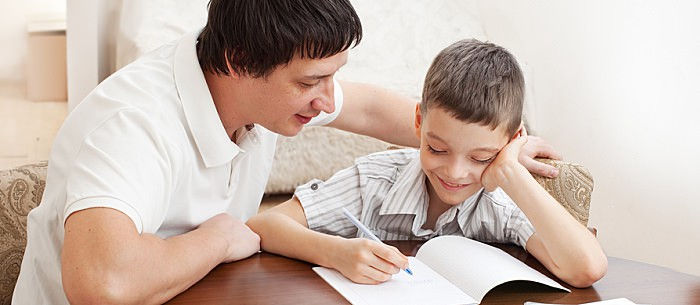You know that learning doesn’t stop at the classroom. As a parent, you are your kid’s first and favorite teacher, and you know her better than anyone else. Naturally, she looks to you to nurture her mind. Take some time to learn the best strategies for how to teach kids at home, and you can start imparting a little parental wisdom.
Here are some tips on how to teach kids to get started:
Know Your Child’s Milestones
What skills should you teach your child, and when? To answer these questions, you need to know what to expect from your child’s development. By 2 years old, most children can walk unassisted, run, kick a ball, scribble, build a short block tower, point to items you name and use two- to four-word sentences. By the end of the preschool years, your child should be able to swing, climb, skip, draw shapes, write a few letters, count to 10 and follow rules. Playing games and activities based on these milestones can help your child practice and refine them.
Avoid pushing your child to learn skills she’s not ready for. Jamie White, a pre-k teacher and creator of the blog Play to Learn Preschool, says, “When children resist an activity, it’s their way of saying ‘This isn’t interesting to me’ or ‘This is too difficult for me.’ If this happens, trust your child. Follow her lead, and nurture her natural interests and curiosity.”
For more on milestones, read our guide to developmental milestones for kids.
Hands-On, Minds-On
Getting hands-on is a time-tested way of teaching kids. Rather than talking at your little one in great detail, just let her explore, experiment and discover for herself. Give her a few brief directions or describe the new task — then let her have at it! For example, instead of talking your toddler through the process of using a spoon, simply give her one and let her experiment with it and a bowl of applesauce. Sure, she’ll get a little messy, but she’ll figure out how to get that spoon to her mouth eventually.
Play, Play, Play
Sari Ockner, an occupational therapist and creator of the website Kidz Occupational Therapy, says if you want to strengthen your kid’s fine motor abilities, you have to pick the right toys. “Some of my favorite toys that work on strengthening the intrinsic muscles of the hands are toys with tongs, like Operation.” Likewise, Ockner notes that when building gross (or large) motor skills, you can use play-type activities such as wheelbarrow walking, crawling on all fours over uneven surfaces like couch cushions or through a tunnel, or propelling herself on her stomach with a scooter board.
White agrees, saying that play can be a great tool when teaching kids to write letters or numbers. She says, “When your little one is painting or coloring, you can teach her how to write the letters of her name.” You can also do a similar activity using chalk. Ask her to draw a hopscotch game on the sidewalk and to number the squares sequentially.
Role Model It
Some skills aren’t easy to explain. Think about the words that you would use to tell your child how to tie her shoes: “Make a loop, tie the other lace around it. Don’t make it too tight, but not too loose. Then you need to wrap it under and up, pulling ever so slightly…” and this goes on and on until your child is totally perplexed. Instead, demonstrate it for her — over and over again.
Modeling doesn’t just work for step-by-step skills. You can also teach your child the art of behavior through your actions. Let’s say you’re at the grocery store and someone holds the door for you. Say and loud and genuine, “Thank you,” and encourage your little one to follow suit.
Teaching your kids everyday skills and lessons is as important as any learning they will eventually do in the classroom. Opportunities for learning happen all day long — have fun with them!
Erica Loop is a mom, freelance parenting writer and educator with an M.S. in child development. When she’s not teaching, she’s busy creating kids’ activities for her blog Mini Monets and Mommies.





